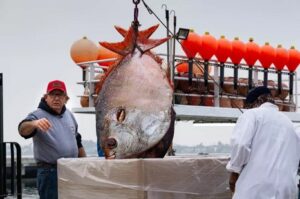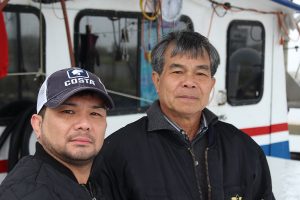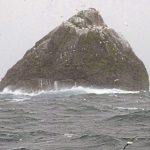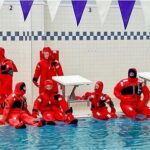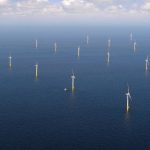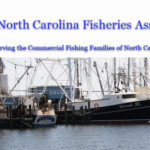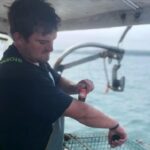Tag Archives: Salish Sea
Dungeness are WA’s most lucrative seafood, but we know little about them
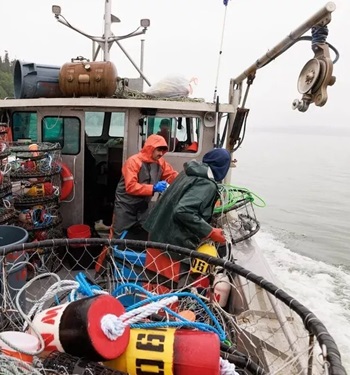 Dom Wilbur slammed the knife into the frozen squid, sending shattered ice flying. Nearby stacks of crab pots teetered as his dad throttled the boat past the Skagit River delta and carved deeper into the fog. As the salty mist enveloped the deck, Dom Wilbur and his cousin Alex Stewart heaved empty pots and stuffed bait traps with the squid and chum salmon. “Go ahead, boys,” J.J. Wilbur called out from the rear cab window. Dom Wilbur and Stewart tossed the buoy off the side of the boat, followed by the splash of a 65-pound pot. They would repeat this dance dozens of times on a late June afternoon and haul up a bounty of Dungeness before sunset. more, >>CLICK TO READ<< 09:23
Dom Wilbur slammed the knife into the frozen squid, sending shattered ice flying. Nearby stacks of crab pots teetered as his dad throttled the boat past the Skagit River delta and carved deeper into the fog. As the salty mist enveloped the deck, Dom Wilbur and his cousin Alex Stewart heaved empty pots and stuffed bait traps with the squid and chum salmon. “Go ahead, boys,” J.J. Wilbur called out from the rear cab window. Dom Wilbur and Stewart tossed the buoy off the side of the boat, followed by the splash of a 65-pound pot. They would repeat this dance dozens of times on a late June afternoon and haul up a bounty of Dungeness before sunset. more, >>CLICK TO READ<< 09:23
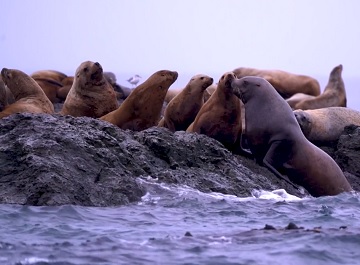
Sea lions, seals might be hampering WA salmon recovery. What can be done?
State officials are now exploring whether to kill sea lions and seals in the Salish Sea and outer coast in a desperate effort to save salmon species from extinction. A new report commissioned by the state Legislature and completed by the Washington Academy of the Sciences says seals and sea lions are likely impeding salmon recovery, and the full impacts of predation on salmon may not be fully understood without lethal intervention. Three mammals specifically have skyrocketed. From 1975 to 2015, the harbor seal population in the Salish Sea exploded from about 6,000 to around 50,000. And California sea lions rose from 50,000 to somewhere around 300,000 on the West Coast of the U.S., according to the Northwest Indian Fisheries Commission. Populations of Steller’s sea lions living around Washington, Oregon and California steadily rose from an estimated 15,000 in 1982 to more than 43,000 in 2019. >click to read< 09:14
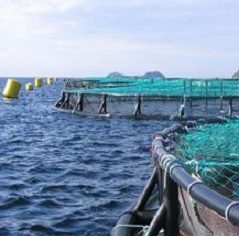
Canadian firm’s steelhead trout farm plan under the microscope after salmon escapes
Last month, a net pen used for fish farming and operated by Cooke Aquaculture Pacific began to dip below the surface off Bainbridge Island. A hole in a pontoon left the structure’s southeast corner partially submerged. Repairs were eventually made. But now as the New Brunswick-based Cooke seeks to farm steelhead trout — instead of the nonnative Atlantic salmon that state law will soon ban — the incident has caught the attention of state regulators. >click to read< 12:58
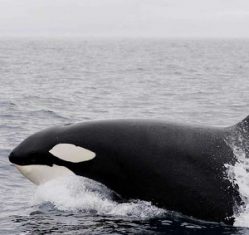
Feds seek expanded habitat protection as salmon, orcas battle climate change, habitat degradation
Advocates for the designation say it provides another layer of review and more legal protection for the whales. “We are thrilled,” said Steve Jones, spokesman for the Center for Biological Diversity,,, However, Lynne Barre, head of killer-whale protection for NOAA, said she did not anticipate big changes if the designation is approved after a public comment period, because activities such as dam operations and fishing already are subject to review by the agency for their effect on endangered species. >click to read< 13:32
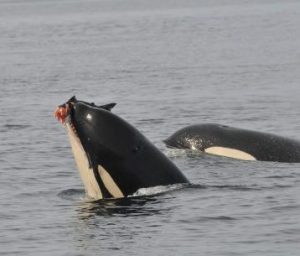
Impossible Choices: The Complicated Task of Saving Both Orca and Salmon
Decades of politics and foot-dragging have stymied the recovery of threatened and endangered Chinook salmon, while an iconic population of killer whales that depends on them veered toward extinction. Now, a last-ditch effort to save the whales may also be what thwarts the recovery of Chinook. The Southern Resident killer whales are dying. An extended family of 75 orcas living year-round in the sea surrounding the San Juan Islands near Seattle, their numbers never fully rebounded since aquariums that later became SeaWorld captured a third of them in the late 1960s. And there are other culprits. Cargo ships and whale-watching boats zip through the Salish Sea, adding noise that interferes with the whales’ ability to locate each other and their prey. The water they live in is toxic. The Puget Sound outside Seattle is tainted with flame retardant, and PCBs and pollutants gush from nearby rivers into the sea. >click to read<10:13
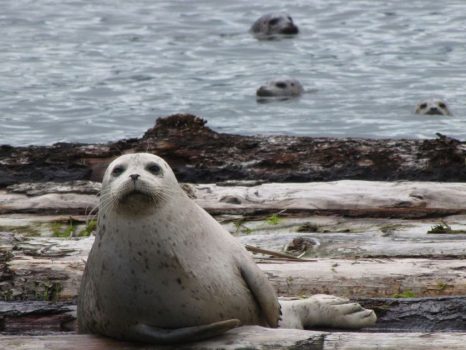
Exploding Salish Sea seal population sparks call for a cull
Tens of thousands of seals in the Salish Sea are devouring millions of adult and juvenile salmon, sparking renewed debate about culling the furry predators. Recent studies have linked high seal-population density to troubled chinook runs and the decline of southern resident killer whales that feed on chinook in the summer.,, A tenfold increase in the population of harbour seals in B.C. waters since then is linked to a massive drop in marine survival of chinook salmon in 14 of 20 wild populations in a new study from the University of British Columbia. By contrast, hatchery fish — another potential explanation — had little impact. “Changes in numbers of seals since the 1970s were associated with a 74-per-cent decrease in maximum sustainable yield in chinook stocks,” it reads. >click to read<10:27
Nanoose First Nation, as well a number of other First Nations along the Salish Sea, are hoping to expand their economic horizons through commercial fishing.
![]() The Nanoose band partnered with the Malahat, Tsawout, Beecher Bay and T’Sou-ke First Nations six years ago to form Salish Strait Seafoods to take advantage of local opportunities in the commercial fisheries. more@nanaimodailynews 09:15
The Nanoose band partnered with the Malahat, Tsawout, Beecher Bay and T’Sou-ke First Nations six years ago to form Salish Strait Seafoods to take advantage of local opportunities in the commercial fisheries. more@nanaimodailynews 09:15

































